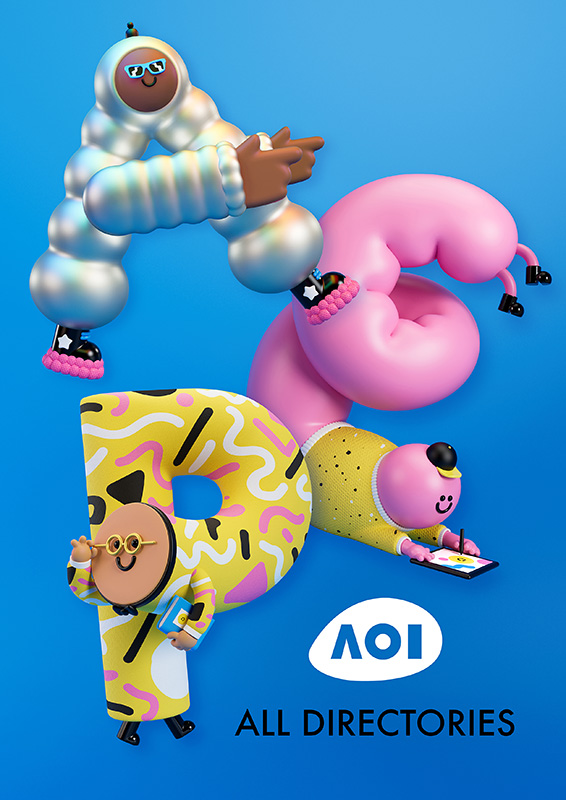All the basic information you need for working in book covers
In this article
What are the basics you need to know about illustrating book covers aimed at adults? In the following resource we explain this side of the publishing industry, what you’ll need in your portfolio, along with briefs, deadlines, licences and contracts for book cover commissions.
This resource is an edited version of the full How To Get Into Illustration for Publishing: Book Covers publication by Holly Macdonald available to AOI Members.
Book Cover publishing
There are a large number of publishers across the UK, ranging in size and speciality. Some publish a handful of titles each year, some publish thousands. While people often think of illustration in terms of children’s books, illustrators are frequently commissioned for adult books as well. Each publisher utilises illustration in different ways depending on the company, any imprints within it and the genres they publish.
A book cover should communicate its content to the right audience, while internal pages have to convey that content in a clear and engaging way to a reader. Getting this package right is vital in supporting the success of a book’s publication.

What you need in your portfolio
Building an awareness and understanding of how illustration is used within adult publishing is beneficial in helping you shape your portfolio. Spend time browsing bookshops or online book retailers to see what kinds of books feature illustration and where your work might best fit.
No one is expecting to see fully designed covers or internal pages in your portfolio if you haven’t been commissioned yet. However, showing evidence of how you might approach a brief will make it easier for designers to pitch your work to non-designers. You could create a few self-initiated cover illustrations inspired by your favourite books, or spot illustrations to illustrate a recipe in a non-fiction cookbook.
Having a look at award winning illustration in the book cover area will show you what is being commended in these areas.
The different areas of publishing illustration
Broadly speaking adult publishing can be split into fiction and non-fiction and within these two strands are many different genres.
In fiction, the rom-com genre typically has illustrated covers, usually featuring characters within a scene. If the book falls into the literary category, then a cover can often be more abstract and less narrative focussed. While adult fiction books don’t typically feature a lot of internal illustrations, sci-fi and fantasy books often feature illustrated maps of imaginary worlds or small chapter details.
In non-fiction, illustration is used in a variety of ways, from nature-based memoirs to fully illustrated lifestyle books. Books described as stocking fillers or gift books are often heavily illustrated to inspire impulse purchases.
Publishing Clients
There are large, corporate publishers and smaller and independent publishers, often specialising in particular genres or subjects. The AOI Client Directories are good place to start in familiarising yourself with the range of publishers out there. The Writers’ and Artists’ Yearbook is also a handy directory.
Following publishers on social media will help you gain an understanding of the types of books they publish and many in-house publishing design teams now have their own team Instagram accounts too. Connecting with freelance designers is another way of sharing your work and many can be found online through LinkedIn or their own websites and social media accounts.
Briefs
Depending on the publisher, briefs are usually written by an editor and then discussed with the wider teams: Design, Sales and Marketing. A designer/art director will then begin sourcing potential illustrators to pitch to the internal teams. The chosen illustrator then receives the brief, including any additional information, the manuscript of the book if useful, plus dimensions and/or templates. The brief should specify if the design is to be front cover only, a full wraparound jacket or internal spot illustrations.
Deadlines
Deadlines within publishing will vary from company to company and from book to book, but many large publishers now require final covers visible online at least six months before publication date. This is to allow Sales and Marketing teams to begin pitching the book to retailers and reviewers and build excitement before release.
Depending on the schedule a cover illustrator may have around two-three weeks to develop rough sketches which a designer would then present to the in-house teams for feedback. If the roughs are liked, then these would usually be shared with author and agent for their thoughts before everyone agrees to move to final artwork. Depending on how the illustrator works another two-three weeks would be allocated for creating final artwork.
Fees
Illustrator fees will vary across the industry, larger publishers have higher budgets and therefore offer larger fees. Fees also vary by country, the US traditionally pays more as they release books into a wider territory and therefore reach a larger audience.
Flat fees are usually offered for cover illustrations, whereas internal illustration fees may be based on the number of pages. The terms of the fee will usually outline the territory the book is publishing in and if the fee is for all editions of the book or just the first publication e.g. hardbacks. Cover fees usually include rights to use the commissioned illustration within marketing material at no additional cost.
Royalties
Use of an illustration on a book cover will not attract a royalty. A royalty may be offered for a book which is heavily illustrated throughout, such as a non-fiction title or fiction title with a significant number of illustrations.
Licensing and Contracts
An illustrator would usually receive a contract from the commissioning designer/art director before work begins. It’s important that all parties read and understand the contract and if there are any questions ask for clarity.
In general, most publishers won’t ask an illustrator to give up their copyright and the AOI strongly advises that illustrators always retain this.
Should a contract not be offered, AOI members can use the Illustrator to Commissioner Agreement.
What’s useful for your publishing focused folio
Christine Isteed, Director of Artist Partners illustration agency
The illustrators I represent have created iconic cover images in all genres of publishing over many years, and my advice to any illustrator is to study the marketplace, to look in bookshops constantly and pick up on any trends – be it style, or genre or approach.
For your portfolio I suggest illustrating covers for books you have read, admired and that resonated with you, and to include images for classics which most people have read and so you already have a familiar audience, who can then judge your image as being relevant to the text.
Of course, covers need to stand out and be noticed for originality and creativity. So whether it be Sci Fi, Fantasy, Romance, Historical or contemporary, immerse yourself in references from theatre, film, museums and galleries for inspiration for cover images.
Cover artworks should encapsulate the story, feel and mood of the text. In your images you’ll need to consider space for the title and author’s name which are normally featured on the top third of the cover. The back cover should allow space for barcodes and the short book blurb and any marketing hooks.
Covers briefs differ, and they may be for the front of the book only or be a full wrap-around illustrations. Illustrators are not generally expected to produce the type on the covers but if you’re interested in that, ensure the type is part of, or integrated within the cover design itself.

Often illustrators create covers for a series of books containing the same characters etc, so this would necessitate the covers having a sequential feel maintained throughout the series. This can be done with type, characterisation or colour palette, or perhaps a similar content matter.
I often ask my Artist Partners artists to produce covers samples – with variations on a theme, with some mocked up with type roughly placed on the cover, and others without any type at all concentrating solely on the images.
AOI Members can explore the area of site specific Illustration in more depth in the How To Get Into Illustration for Publishing: Book Covers publication written by book designer Holly Macdonald.
Go here to read the Publishing Season: Book Covers Basics
Go here to read the Site Specific Illustration Basics
Go here to read the Illustration for Children Basics
Go here to read the Branding Illustration Basics
Go here to read the Editorial Illustration Basics
AOI Members have access to all Inside Illustration content.
Members also have access to the AOI’s Pricing Calculator, which assists with quotes for Site Specific along with other areas of illustration commissioning.
To help find clients AOI produces annually updated Client Directories at a reasonable price, with contacts for advertising and design, publishing and editorial companies.
AOI speaks directly to the commissioners and passes on information about the kind of work they’re looking for.
The AOI would like to make resources accessible to all members. If you would like an alternative format please ask.

